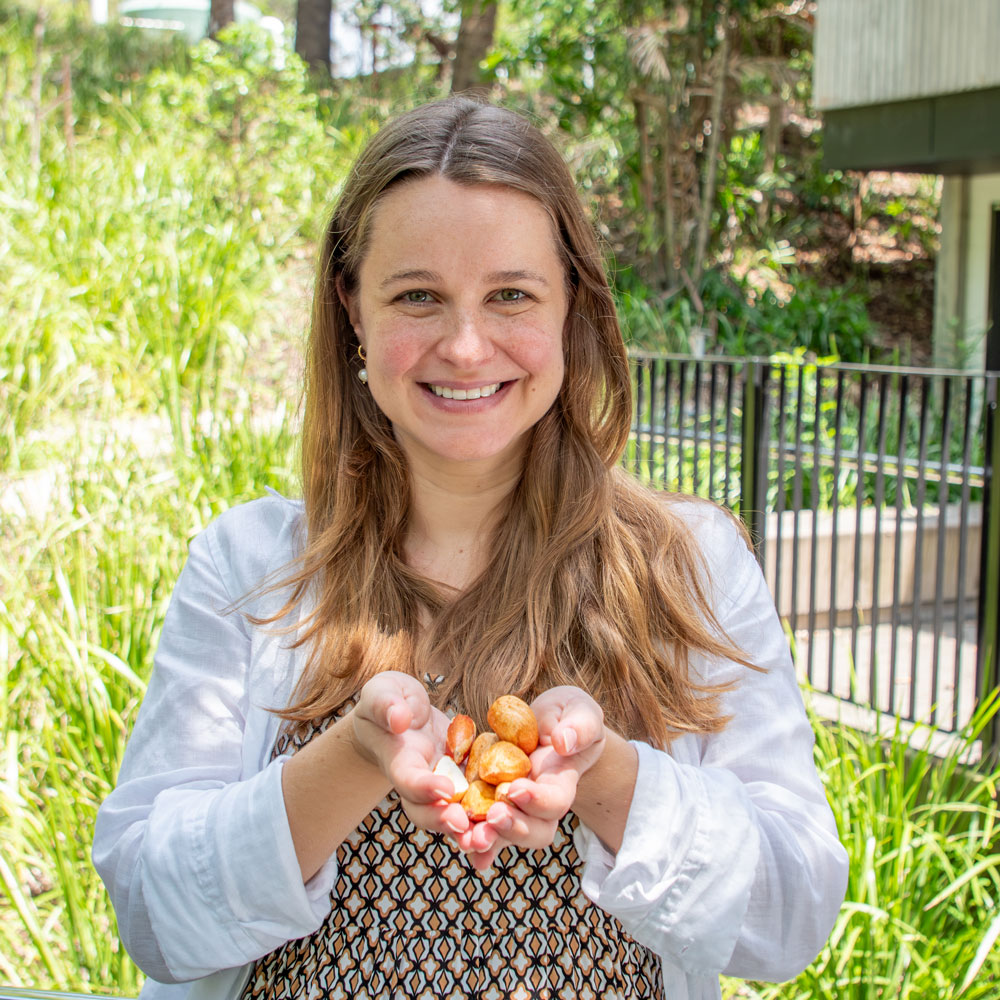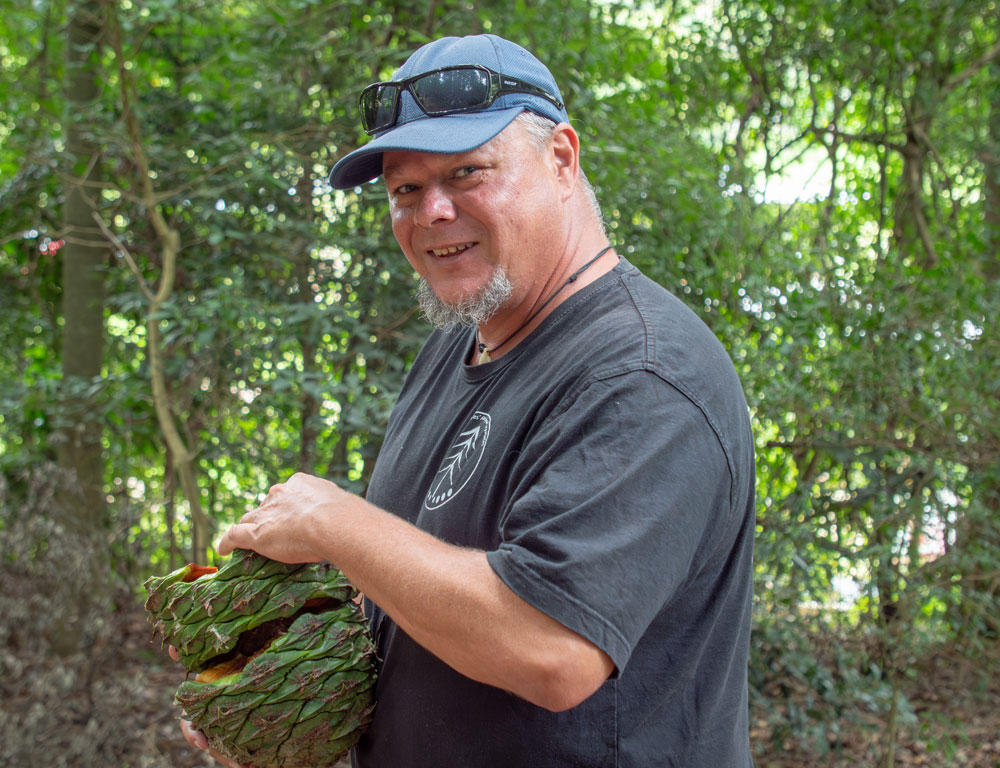A culturally significant Australian nut dating back to Jurassic times could have a big future thanks to University of Queensland-led research revealing its substantial health benefits.
Dr Jaqueline Moura Nadolny from UQ’s Queensland Alliance for Agriculture and Food Innovation said the bunya nut (Araucaria bidwillii) was an energy and nutrient dense bushfood with huge commercial potential.

“Bunya nuts are low in fat, high in fibre, gluten free and contain all the essential amino acids, protein and folate, while the husk is high in antioxidant compounds,” Dr Nadolny said.
“Indigenous Australians boiled and roasted them, but they can be eaten straight out of the cone, ground into flour, brewed into tea and even fermented.”
Dr Nadolny said bunya nuts could be as commercially successful as similar nuts from the same family in Brazil and Chile, but the industry in Australia faced environmental challenges.
“Established bunya trees are under threat from phytophthora, a root rot that causes dieback,” she said.
“It’s critical new trees are planted, as well as grafted to speed up fruiting to within five or six years.
“Each tree can produce hundreds of cones, each containing up to 100 nuts.
“In South America, grafting has helped boost production.”
Shannon Bauwens, Cultural Services Coordinator for the Bunya People’s Aboriginal Corporation has welcomed Dr Nadolny’s research.
“The bunya nut has a strong cultural significance to traditional owners and other Indigenous peoples who gathered for thousands of years in pre-colonial times for feasting and ceremonies,” Mr Bauwens said.
“The Bunya Mountains in southern Queensland are home to the largest known stand of the species in the world, and the trees live for hundreds of years.
“Creating an industry surrounding the bunya nut would not only ensure its survival but create a sustainable industry for mob, allowing them to share their knowledge with the community.”
Dr Nadolny said bunya nuts could be the centre of a thriving Indigenous enterprise.
“I work with Indigenous communities who are interested in harvesting, selling and producing food products from the nuts, creating jobs and income,” she said.

“Taking measures now to ensure a healthy future for Australia’s bunya trees could lead to showcasing this incredible Indigenous food and its potential to the world,” she said.
The research paper was published in Food Research International.
The ARC Centre for Uniquely Australian Foods is supported by the Australian Government through the Australian Research Council’s Industrial Transformation Training Centre funding scheme (project IC180100045), the Department of Agriculture and Fisheries and the University of Queensland.
Media contacts: Dr Jaqueline Moura Nadolny, j.mouranadolny@uq.edu.au +61 466 918 630; Shannon Bauwens, Bunya People’s Aboriginal Corporation shannon@bpac.org.au; QAAFI Media, Natalie MacGregor n.macgregor@uq.edu.au +61 409 135 65.
Media Assets: Download images and video for this story. Here is an alternative Image Link.
The Queensland Alliance for Agriculture and Food Innovation is a research institute at The University of Queensland supported by the Queensland Government via the Queensland Department of Agriculture and Fisheries.



